How to Choose a Pointing Dog – Breaking Down 38 Bird Dog Breeds
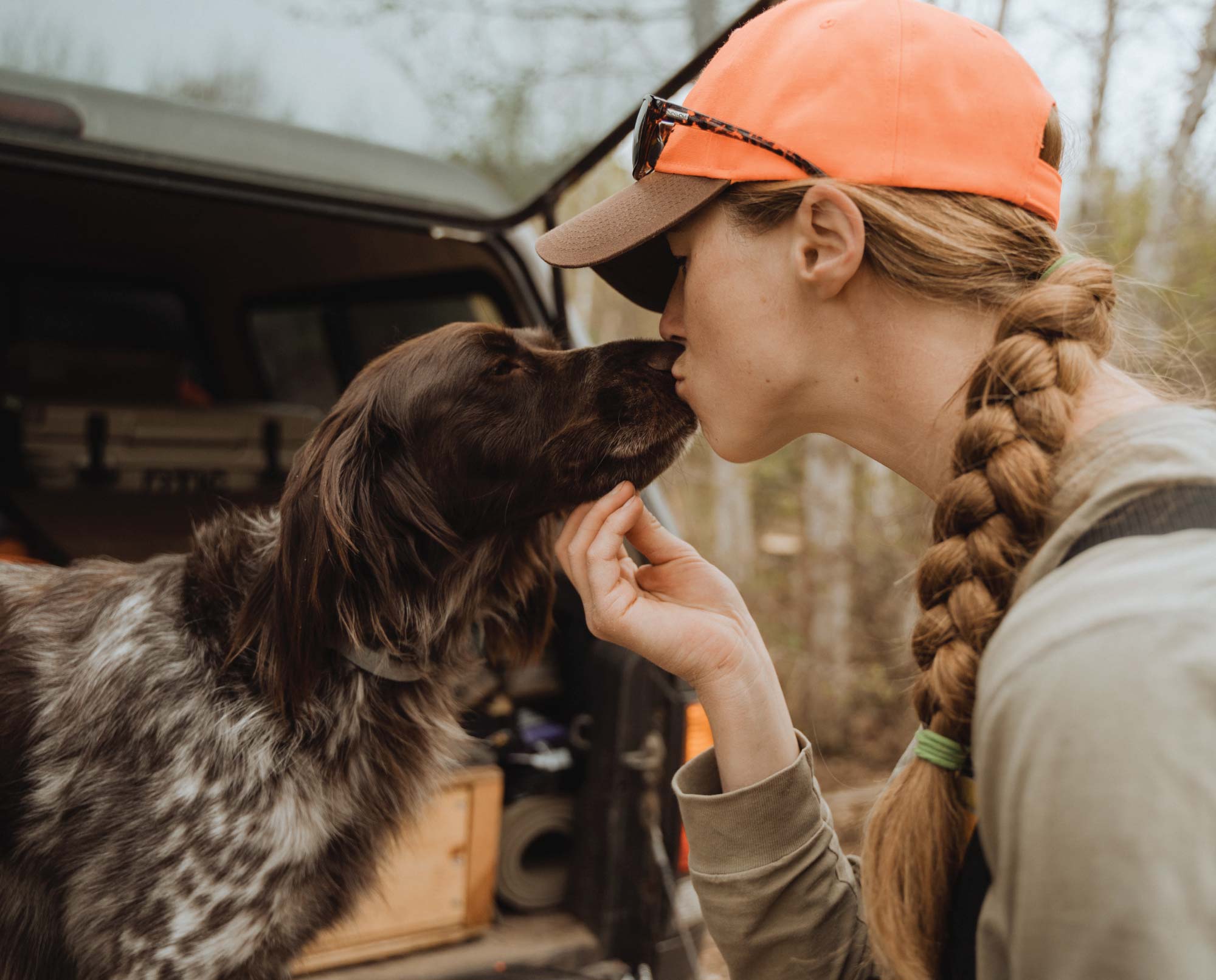
Narrowing down what pointing breed to choose can be daunting; this guide will help find the right bird dog for you
I have watched double-nosed Spanish pointers hunt quail in the arid hills of Guadalajara, and I’ve seen Old Danish pointers seek partridge under the wind turbines of Jutland. I’ve chased ruffed grouse with Pont-Audemer spaniels in Manitoba and hunted sharp-tailed grouse with a small herd of Large Munsterlanders in Saskatchewan. I saw a Weimaraner kill a roe deer with a single bite on the island of Baltrum, and I’ve seen German shorthaired pointers and Brittanys just about everywhere I’ve been. And what I’ve seen has led me to one conclusion: a pointing dog’s raison d’être is to put a smile on its owner’s face.
But I have also learned that to be truly happy with any gun dog, you need to find the right dog for you. No breed of pointing dog can satisfy the needs and wants of everyone. And no breed of pointing dog is guaranteed to produce only top-notch performers. There are good and bad individuals in all breeds. So, when you start looking for the right dog—the one that will put a smile on your face—you must assume what Charles Fergus in his book A Rough-Shooting Dog called the “burden of choice.”
It was hardly a casual thing, picking a pup. Here was a creature with whom I would share the next fifth of my life: a housemate, family member, hunting partner, friend. One does not pick children, one is given them—but with dogs, one assumes the burden of choice.
Lisa and I know all too well just how easy it is to catch the new puppy bug. If we had more room in our house and a healthier bank account we would have dozens of dogs, probably one or two of each breed! I do realize that there will be people who see a particular breed in my book and feel that they absolutely have to get a pup.
But there are entire how-to books written about finding just the right breed and picking the best pup. And there are dozens of internet sites dedicated to helping people navigate the ins and outs of making the purchase, so I will not cover that material here. What I can do, as someone who has traveled a great deal to research every one of the pointing breeds in the world, is offer the following advice that will hopefully help put the odds in your favor of finding the right dog for you.
In my first book Pointing Dogs Volume One: The Continentals, I described pointing breeds from Continental Europe and gave special attention to their characteristics that are most important to hunters. Towards the end of the book I included a section titled “The Right Dog For You” in which I offer some suggestions to people looking for the right dog to accompany them to the field. This article is a summary of the main points of that section and includes the charts found in the book.
Please note: the information I am providing here was taken from tables published in Volume One for pointing breeds from Continental Europe. I’ve also added information that will appear in the book I am currently working on Volume Two: The British and Irish Pointing Breeds which will feature similar tables when it is published.
Want to learn more about dog breeds, their history, and the culture that surrounds them? Check out the new podcast series: Hunting Dog Confidential
Step 1: Know what you want in a dog
Know thyself first and foremost. The right dog for you must be from a breed and a line within that breed that is known to work in the way you want it to work. So before you start looking for a pup, look inward. Think about your own character, activity level and hunting style, not how you wish they were, but what they actually are.
Why do you hunt? To relax? For the adrenaline rush of the chase? What do you hunt? Mainly upland birds with a bit of waterfowl on occasion? Or diver ducks on big water with the occasional ring-necked pheasant hunt for fun? Where do you hunt? Close to home? 1000 miles away from home? What kind of performance do you expect from a dog?
| POINTING BREED | ABBREVIATIONS |
| Blue Picardy Spaniel | BPS |
| Bracoo Italiano | BI |
| Braque D’Auvergne | BAU |
| Braque De L’Ariege | BA |
| Braque Du Bourbonnais | BB |
| Braque Français Pyrenean Type | BFP |
| Braque Français Gascony Type | BFG |
| Brittany | B |
| Burgos Pointer | BP |
| Cesky Fousek | CF |
| Drentsche Patrijshond | DP |
| English Setter | ES |
| French Spaniel | FS |
| German Longhaired Pointer | GLP |
| German Shorthaired Pointer | GSP |
| German Wirehaired Pointer | GWP |
| Gordon Setter | GS |
| Irish Red and White Setter | IRWS |
| Irish Red Setter | IRS |
| Large Munsterlander | LM |
| Majorcan Pointer | MP |
| Old Danish Pointer | ODP |
| Pachon Navarro | PN |
| Picardy Spaniel | PS |
| Pointer | P |
| Pont-Audemer Spaniel | PAS |
| Portuguese Pointer | PGP |
| Pudelpointer | PP |
| Slovakian Wirehaired Pointer | SWP |
| Small Munsterlander | SM |
| Spinone Italiano | SP |
| St. Usuge Spaniel | SUP |
| Stabyhoun | SH |
| Stichelhaar | ST |
| Vizsla | V |
| Weimaraner | W |
| Wirehaired Pointing Griffon | WPG |
| Wirehaired Vizsla | WV |
If your pleasure is running with the big boys in top-level trials, get a bird dog from a breed that is designed for that sort of activity. If you prefer a closer-working dog, or perhaps one that really excels at water work, tracking, retrieving, or whatever activity gets your motor running, then you should get a dog from a breed that has been designed to work the way you want it to work. After all, it is just as foolish to get a Formula One race-car dog to hunt the back 40 once in a while as it is to get a super mellow close worker for a month of chasing chukars in Idaho.
Step 2: Use these charts to narrow down your choice of bird dogs
This first chart gives breed abbreviations as well as links to more in-depth looks at individual breeds as the content becomes available. Following the charts below will help narrow down the selection of bird dog breeds that make sense for your needs to help better guide you on where to begin your search.
Bird dog coat types and colour
A dog doesn’t care what colour its coat happens to be, nor do the birds it pursues. But since beauty is in the eye of the beholder, and for many people hunting over a pretty dog is important, you may want to consider coat colour when looking for a new hunting companion. When it comes to coat types, personal preferences can also play a role, but some aspects of a dog’s performance may also be affected by what kind of coat it has. The general consensus is that short coats are better for hunting in hot, dry conditions; long coats have the edge when it is cold and wet, and wire-haired coats are the most protective in harsh conditions, cold or hot, wet or dry.
| COAT TYPE/COLOR | LONG | SHORT | ROUGH | CURLY |
|---|---|---|---|---|
| SOLID BROWN | GLP | GSP | CF | PAS |
| MP | GWP | |||
| P | PP | |||
| PN | ST | |||
| WPG | ||||
| BROWN & WHITE | B | BB | CF | PAS |
| DP | BFG | GWP | ||
| FS | BFP | PP | ||
| GLP | BI | SP | ||
| PN | BP | ST | ||
| PS | GSP | WPG | ||
| SM | MP | |||
| SUS | ODP | |||
| P | ||||
| PN | ||||
| SOLID WHITE | ES | BI | PAS | |
| P | ||||
| SOLID BLACK | GSP | PP | PS | |
| MP | ||||
| P | ||||
| PN | ||||
| BLACK AND WHITE | BPS | BAU | ||
| ES | GSP | |||
| LM | MP | |||
| SH | P | |||
| PN | ||||
| BLACK AND TAN | ES | MP | ||
| GS | PN | |||
| P* | ||||
| SOLID RED(YELLOW/TAN) | IS | P | WV | |
| PUP | ||||
| V | ||||
| RED AND WHITE | ES | MP | ||
| IRWS | P | |||
| IRS | PN | |||
| ORANGE AND WHITE | B | BI | SP | |
| ES | BA | WPG | ||
| BB | ||||
| P | ||||
| SILVER GREY | P* | SWP | ||
| W | ||||
| TRICOLOURED | B | BB | ||
| ES | MP | |||
| PN | ||||
| PS | ||||
| P* |
Range of bird dog size
All of the pointing breeds are more or less medium sized, but a comparison of their standards shows a variation in height within the breeds and reveals a difference of almost 30 cm between the shortest and the tallest pointing breeds. The chart on the right illustrates the relative minimum and maximum sizes for each breed. The measurements given are based on the minimum size for a female to the maximum size for a male in the FCI standard.
Standards usually allow for a certain amount of leeway; one or two centimeters beyond the limits set out in the standard are usually accepted. A few standards are fairly vague, only listing an ideal height and allowing for “a little more or less.”
There may be a tendency toward one end of the range; this tendency can shift over time and may not be the same in all areas. For example, in the U.S. there is a tendency among breeders selecting dogs for field trials to keep them toward the lower range of the height standard. In Germany and other central European countries, the opposite is true. Many breeders there select for dogs that are closer to the top of the standard.
Different registries follow different standards. The FCI standard for the German shorthaired pointer, for example, sets a range of 58 cm for the minimum height of females, to 66 cm for the maximum height of males. The standard in the U.K., on the other hand, allows for females as short as 53 cm (a full 5 cm lower than the FCI standard) and limits males to 64 cm (2 cm less than the maximum in the FCI standard). The American standard is somewhere in between, ranging from a minimum of 58.4 cm for females, to a maximum of 63.5 cm for males.
Standards change. Adjustments in the maximum and/or minimum heights found in the breed standards happen relatively often. The chart is based on the standards in place at the time of writing the book Pointing Dogs: Volume One (2010).
| POINTING BREED | SMALL | MEDIUM | LARGE |
|---|---|---|---|
| Blue Picardy Spaniel | X | ||
| Bracco Italiano | X | X | |
| Braque D’Auvergne | X | ||
| Braque De L’Ariege | X | ||
| Braque Du Bourbonnais | X | ||
| Braque Français Pyrenean Type | X | X | |
| Braque Français Gascony Type | X | X | |
| Brittany | X | ||
| Burgos Pointer | X | X | |
| Cesky Fousek | X | ||
| Drentsche Patrijshond | X | ||
| English Setter | X | X | X |
| French Spaniel | X | X | |
| German Longhaired Pointer | X | X | |
| German Shorthaired Pointer | X | X | X |
| German Wirehaired Pointer | X | X | |
| Gordon Setter | X | X | |
| Irish Red and White Setter | X | X | |
| Irish Red Setter | X | X | X |
| Large Munsterlander | X | X | |
| Majorcan Pointer | X | ||
| Old Danish Pointer | X | ||
| Pachon Navarro | X | ||
| Picardy Spaniel | X | X | |
| Pointer | X | X | |
| Pont-Audemer Spaniel | X | ||
| Portuguese Pointer | X | ||
| Pudelpointer | X | ||
| Slovakian Wirehaired Pointer | X | X | |
| Small Munsterlander | X | X | |
| Spinone | X | X | |
| St. Usuge Spaniel | X | ||
| Stabyhoun | X | X | |
| Stichelhaar | X | X | |
| Vizsla | X | ||
| Weimaraner | X | X | |
| Wirehaired Pointing Griffon | X | ||
| Wirehaired Vizsla | X |
The population of pointing dog breeds
This chart Illustrates the approximate average numbers of pups born per year in each breed. However, care must be taken to consider the figures in context since, like skimpy bathing suits, statistics reveal a lot but they also hide the important parts.
For hunters, ‘popular’ does not necessarily mean ‘good.’ For example, there are vast numbers of Weimaraner pups whelped every year—over 10,000 in North America alone—but less than 10 percent are from proven working lines. Conversely, the number of Pudelpointer pups born each year is fewer than 600, yet 99 percent of them are from parents that have been selected for the field. For a hunter seeking a decent bird dog, there are actually about the same number of Weimaraner and Pudelpointer pups from field tested and proven ‘popular.’ So when considering a breed’s overall population, keep the following points in mind:
- Breeds are not uniform. There can be significant differences in terms of looks and hunting styles when you compare separate populations of the same breed. For many breeds, the biggest differences are found when comparing field-bred dogs and show-bred dogs. In some breeds, the differences are so great that they may seem like completely separate breeds. Even when comparing field-bred lines, separate populations within a breed will reflect the differences in the testing or field trial systems that produced them.
- Breed popularity varies from one region to another. Fewer than half of the Continental breeds still being bred today have sustainable populations outside of their native land and fewer still have been recognized by all the major canine registries. Some breeds are extremely popular outside their homelands, but that popularity varies from country to country. For example, there are well over 15,000 Brittany pups whelped per year in the world, including 5,000 in France alone. So finding one in France is easy. But next door, in the U.K., the Brittany is hardly on the radar. Only about 100 Brittanys are registered by the U.K.’s Kennel Club per year, so getting one there is nowhere near as easy.
- Breed availability varies from one region to another. Interested in say, a GSP? No problem. It is one of the most widely available pointing dogs on the planet. So no matter where you live, you can probably find one relatively close to home. How about a Cesky Fousek? No problem . . . if you live in the Czech Republic. It is the most popular pointing breed there and is represented by a strong and dynamic club. But if you live just about anywhere else in the world, getting one will take a bit more homework
- Populations rise and fall. This chart is nothing more than a snapshot of pointing breed populations as they were in the early 2000s. If it had been drawn up a century ago, it would be very different. Some breeds would be much higher up, others lower, and many not even on the list. Even if it were drawn up only 20 years ago, the relative standings would be different. As for what it will look like 20 years from now, who knows what breeds will be the next big thing, which ones will decline, and which ones may actually disappear?
| POINTING BREED POPULATIONS | Tiny | Small | Medium | Large |
|---|---|---|---|---|
| Blue Picardy Spaniel | X | X | ||
| Bracco Italiano | X | X | ||
| Braque D’Auvergne | X | X | ||
| Braque De L’Ariege | X | |||
| Braque Du Bourbonnais | X | X | ||
| Braque Français Pyrenean Type | X | X | ||
| Braque Français Gascony Type | X | |||
| Brittany | X | |||
| Burgos Pointer | X | X | ||
| Cesky Fousek | X | |||
| Drentsche Patrijshond | X | |||
| English Setter | X | |||
| French Spaniel | X | X | ||
| German Longhaired Pointer | X | X | ||
| German Shorthaired Pointer | X | |||
| German Wirehaired Pointer | X | |||
| Gordon Setter | X | X | ||
| Irish Red and White Setter | X | |||
| Irish Red Setter | X | X | ||
| Large Munsterlander | X | X | ||
| Majorcan Pointer | X | |||
| Old Danish Pointer | X | |||
| Pachon Navarro | X | |||
| Picardy Spaniel | X | |||
| Pointer | X | |||
| Pont-Audemer Spaniel | X | |||
| Portuguese Pointer | X | X | ||
| Pudelpointer | X | X | ||
| Slovakian Wirehaired Pointer | X | |||
| Small Munsterlander | X | X | ||
| Spinone | X | X | ||
| St. Usuge Spaniel | X | |||
| Stabyhoun | X | |||
| Stichelhaar | X | |||
| Vizsla | X | X | ||
| Weimaraner | X | X | ||
| Wirehaired Pointing Griffon | X | X | ||
| Wirehaired Vizsla | X |
The range of bird dog breeds
Since a pointing dog’s main purpose is to find game, point it and remain there until the hunter arrives, it can do what a flushing dog cannot: work at distances beyond the range of a shotgun. Traditionally, all of the Continental breeds were selected and trained to hunt only slightly further out than flushing dogs, about 50 or 60 meters at the most. Nowadays, a few breeds are still supposed to have that sort of range, but most are expected to run wider than that, at least some of the time.
What’s more, over the last 50 years, bigger and faster running strains within many of the breeds have been developed. Some lines in some breeds now approach the speed and range of English pointers and setters. Be that as it may, I have come up with a chart that illustrates the typical range for each of the Continental pointing breeds, but we need to keep the following things in mind when consulting it:
- The best range is the one that suits you. One of the most common sources of frustration among pointing dog owners is a mismatch between the range the hunter would like his dog to run at, and the range the dog’s genes tell it to run at. Most experts agree that a pointing dog’s range is largely an inherited trait. There are methods that can be employed to modify this range—making a wide-ranging dog work closer or, with more difficulty, making a close-working dog range further out—but in general the distance from the handler at which the dog is most comfortable hunting is mainly determined by its genes. So, finding a breed that has the kind of range you are comfortable with, and is suitable for the game and terrain you hunt, is very important.
- These are ballpark figures. The chart is not based on anything close to a scientific survey. Some of the distances given are based on the preferred ranges stated in the breed’s published work standard, but most are based on nothing more than the breed’s reputation or the generally accepted norm as expressed to me by the breeders and owners I have spoken with.
- There are exceptions. There are outliers in every breed. Some may run way bigger than the average, and others may work closer in. In many breeds, this applies to various strains and lines that may show significant differences in range. That is why the chart shows a wider spectrum of ranges for some breeds.
- Horses for courses. Generally speaking, within any given breed, breeders who select their stock for field trials tend to produce dogs that lean toward the bigger running end of the spectrum. Other breeders may seek to produce closer-working dogs suitable for different types of terrain or game.
- To the front or side-to-side. In some countries, dogs are expected to run in a windshield wiper pattern in front of the hunter. In that case, the distances given would indicate how far the dog usually ranges out to one side or the other. In other countries, dogs are encouraged to “seek objectives.” They should run to areas of cover that are likely to hold birds no matter where they may be, to the left, to the right, or out in front.
- Dogs adjust their range. The distances shown in the chart reflect the usual range for the breed when hunting in open fields. Most dogs will adjust their range when working in tighter cover. The same dog that ranges out to over 300 meters across a stubble field for grey partridges might not go beyond 40 or 50 meters in the alder thickets in pursuit of woodcock. And yes, as mentioned above, a dog’s range can be adjusted. But it is easier to teach a wide-running dog to stay closer than it is to make a close-working dog work further out.
| POINTING BREED RANGE | Close | Medium | Big Running | Dot on Horizon |
|---|---|---|---|---|
| Blue Picardy Spaniel | X | X | X | |
| Bracco Italiano | X | X | X | |
| Braque D’Auvergne | X | |||
| Braque De L’Ariege | X | X | ||
| Braque Du Bourbonnais | X | X | ||
| Braque Français Pyrenean Type | X | X | ||
| Braque Français Gascony Type | X | X | ||
| Brittany | X | X | X | X |
| Burgos Pointer | X | X | ||
| Cesky Fousek | X | X | ||
| Drentsche Patrijshond | X | X | ||
| English Setter | X | X | X | X |
| French Spaniel | X | |||
| German Longhaired Pointer | X | |||
| German Shorthaired Pointer | X | X | X | X |
| German Wirehaired Pointer | X | X | X | |
| Gordon Setter | X | X | X | |
| Irish Red and White Setter | X | X | X | |
| Irish Red Setter | X | X | X | X |
| Large Munsterlander | X | X | ||
| Majorcan Pointer | X | X | ||
| Old Danish Pointer | X | X | ||
| Pachon Navarro | X | X | ||
| Picardy Spaniel | X | X | X | |
| Pointer | X | X | X | X |
| Pont-Audemer Spaniel | X | X | ||
| Portuguese Pointer | X | X | X | |
| Pudelpointer | X | X | X | |
| Slovakian Wirehaired Pointer | X | X | X | |
| Small Munsterlander | X | X | ||
| Spinone | X | X | X | |
| St. Usuge Spaniel | X | |||
| Stabyhoun | X | |||
| Stichelhaar | X | X | ||
| Vizsla | X | X | X | |
| Weimaraner | X | X | X | |
| Wirehaired Pointing Griffon | X | X | X | |
| Wirehaired Vizsla | X | X |
Speed and gait of pointing dog breeds
Pointing dogs should not just dawdle about the field when seeking game. Nor should they run like greyhounds. Hunters generally want to see pointing dogs display a dynamic, animated field search that leaves no doubt about their mission: find game—now!
Traditionally, most of the Continental breeds were trotters. Over the last 50 to 100 years, many have been modified through selective breeding, crossbreeding or both, to hunt at a medium to fast gallop. But speed and gait are two performance characteristics that can vary greatly from one breed to the next and among the individuals in a breed. Depending on a number of factors, a pointing dog may hunt at anything from a quick trot to a full-blown sprint. The table on the right shows the typical gait and approximate speed of the various pointing breeds. The most commonly seen gaits are:
Trot: Symmetrical gait similar to that of a trotting horse. Also called a flying trot. Some larger dogs moving at a trot can actually cover the ground faster than some smaller dogs running at medium gallop. A more complete description of this gait is found in the chapter on the Bracco Italiano.
Medium gallop/lope: The all-day gait that most dogs use in actual hunting situations. Dogs that would normally hunt at a faster gallop for short periods of time learn to pace themselves when hunting for many hours by shifting into a medium gallop or lope.
Fast gallop: This gait is most often seen in field trials where dogs are trained and encouraged to run faster than they normally would when hunting.
Sprint: Most hunters will only see their dog really sprint if a rabbit pops up and tempts it into giving chase. But in some field trials held in Europe dogs are expected to run at a double suspension gallop for the 15 to 20 minutes they are under judgement. Of course, not all breeds participate in spring trials; some are simply not built for the kind of speed that is required. But some do, and within them are individual dogs that run very fast, indeed.
When reviewing the chart, here are a few things to keep in mind.
- There are exceptions.
- The chart is designed to compare the typical speed and gait for each breed. The lines are shaded to indicate that the range of speeds within the breed is not set in stone.
- “Horses for courses”
- Generally speaking, breeders who select their stock for field trials usually produce dogs that are toward the faster end of the spectrum within any given breed.
- Dogs adjust their gait.
- All dogs can walk, trot, gallop and sprint. The Continental pointing breeds in particular are valued for their ability to “switch gears” and should match their gait to the terrain and game. Most working standards for Continental pointing dogs indicate that the preferred gait is a gallop, but that periods of trotting are tolerated.
| POINTING BREED SPEED | Trot | Medium Gallop | Fast Gallop | Ass on Fire |
|---|---|---|---|---|
| Blue Picardy Spaniel | X | X | X | |
| Bracco Italiano | X | X | ||
| Braque D’Auvergne | X | X | ||
| Braque De L’Ariege | X | X | ||
| Braque Du Bourbonnais | X | X | ||
| Braque Français Pyrenean Type | X | X | X | |
| Braque Français Gascony Type | X | X | ||
| Brittany | X | X | X | |
| Burgos Pointer | X | X | ||
| Cesky Fousek | X | |||
| Drentsche Patrijshond | X | |||
| English Setter | X | X | X | |
| French Spaniel | X | X | ||
| German Longhaired Pointer | X | X | ||
| German Shorthaired Pointer | X | X | X | |
| German Wirehaired Pointer | X | X | ||
| Gordon Setter | X | X | ||
| Irish Red and White Setter | X | X | ||
| Irish Red Setter | X | X | X | |
| Large Munsterlander | X | X | ||
| Majorcan Pointer | X | X | ||
| Old Danish Pointer | X | |||
| Pachon Navarro | X | |||
| Picardy Spaniel | X | X | ||
| Pointer | X | X | X | |
| Pont-Audemer Spaniel | X | X | ||
| Portuguese Pointer | X | X | ||
| Pudelpointer | X | X | ||
| Slovakian Wirehaired Pointer | X | X | ||
| Small Munsterlander | X | X | ||
| Spinone | X | X | ||
| St. Usuge Spaniel | X | |||
| Stabyhoun | X | X | ||
| Stichelhaar | X | |||
| Vizsla | X | X | ||
| Weimaraner | X | X | ||
| Wirehaired Pointing Griffon | X | X | ||
| Wirehaired Vizsla | X | X |



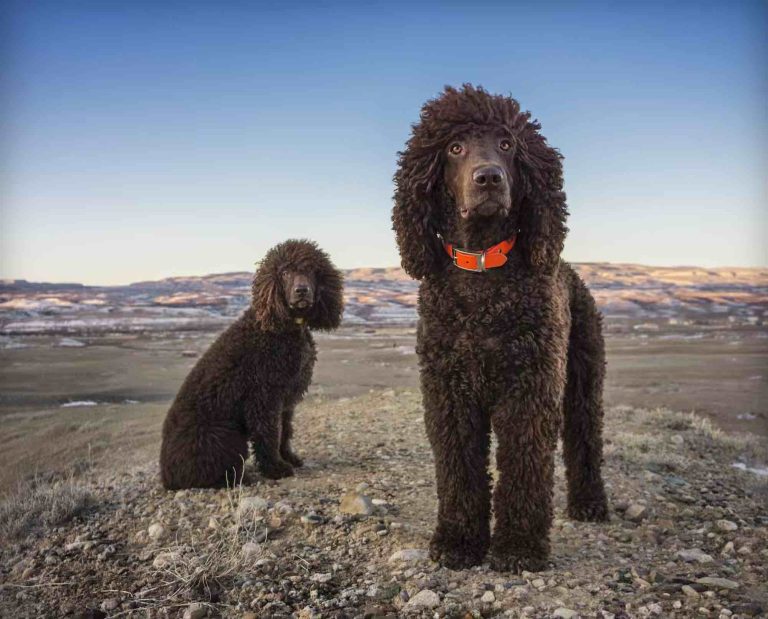
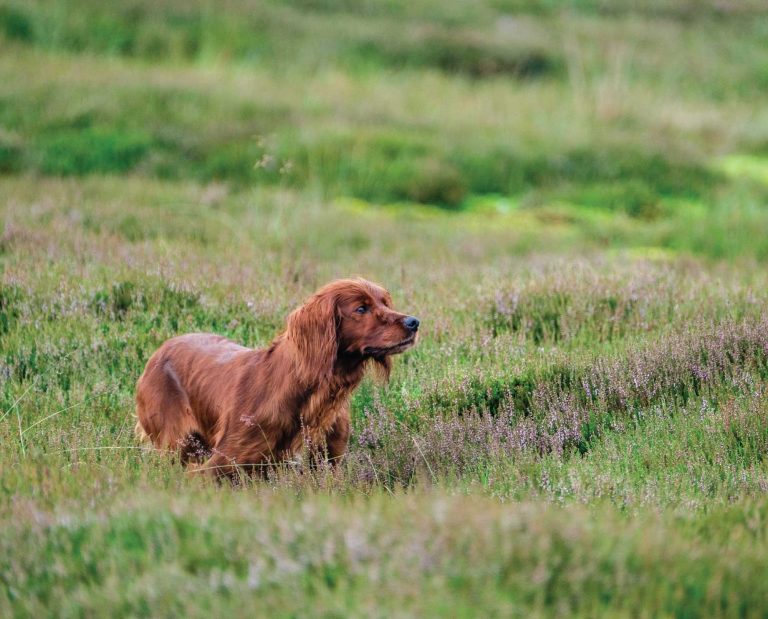
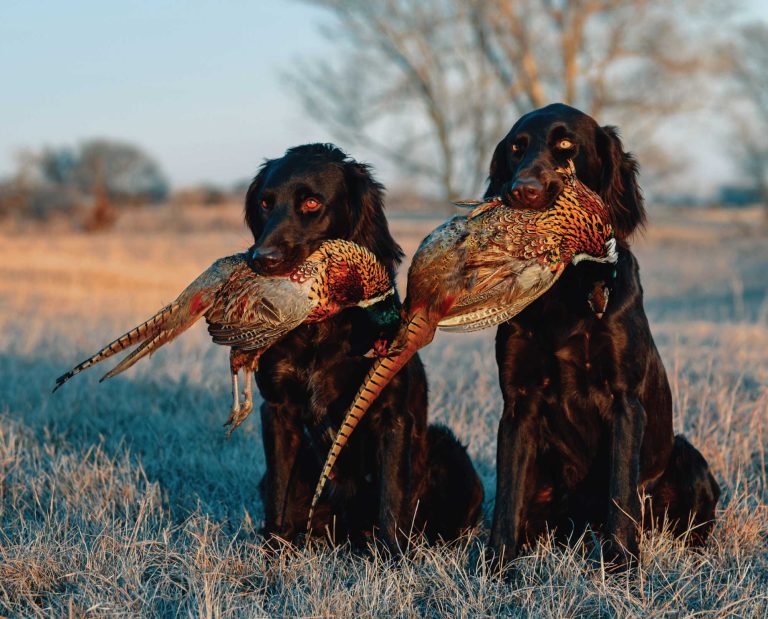
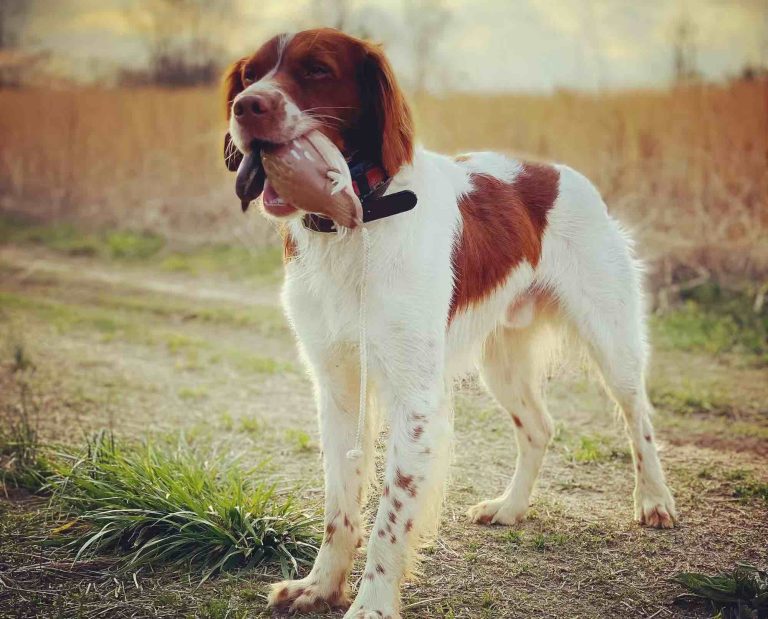

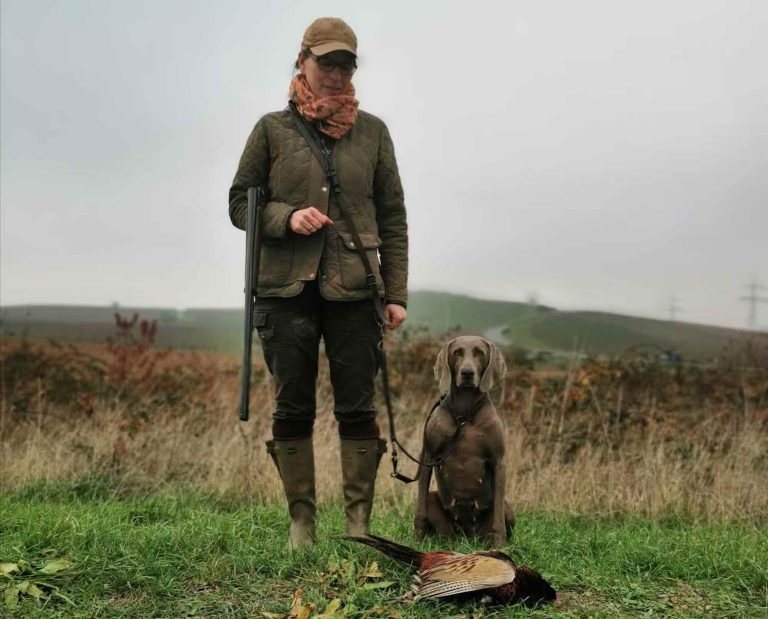
As always, more good info. Thanks guys!
Craig and Lisa,
Once again a great article full of great information.
This may be the best information I’ve ever seen about hunting dog traits and selection. GREAT article.
Excellent work’
Excellent, helpful information. Thanks for sharing!
llewellin owners are disappointed we didn’t get our own category.
Why wasn’t the Elhue Pointer mentioned.
Nice info. You nailed it for our Pudelpointer and GSP. Our Pudelpointer has a slick coat, which I am finding more and more of. It is not “breed desirable” but it is very desirable for those working hot places or places with loads of stuff that might stick to longer hair.
In Sweden the field trials are a tool for breeding and an evaluation of the of what traits parents have left their offspring. Therefore the judges should focus on judging the right job for the specific breed. They could really benefit from reading your charts. At a convention it was decided that the breeds with no breed club should be judged as Weimaraners. Now i’m doing my best to explain the hunting style of my Saint Usuges and Picardy spaniels. 🙂 The former especially would never even get close to resemble a Weimaraner.
What is “PUP” under SHORT& SOLID RED(YELLOW/TAN)? I thought it might be the Portuguese Pointer (PGP), but I noticed the St. Usuge Spaniel (SUP) isn’t included in the Coat Type/Color chart either.